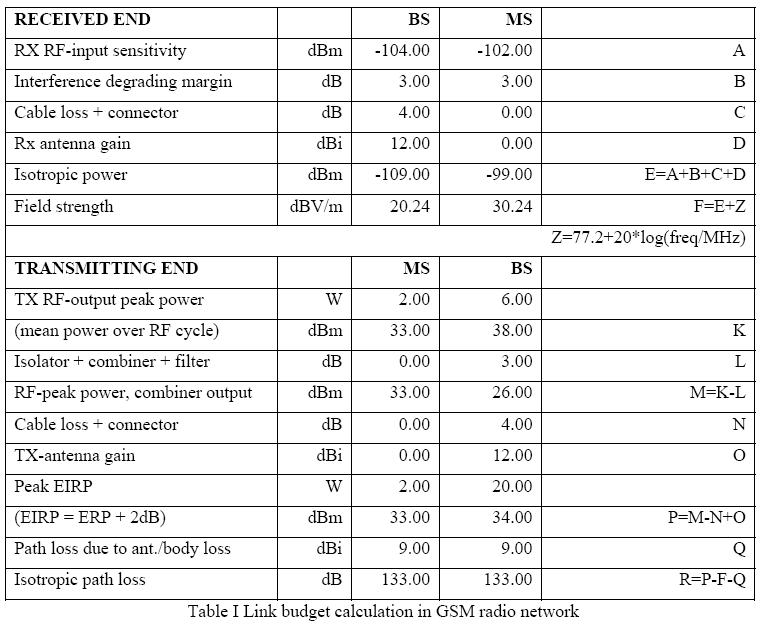GSM planning
In GSM, the network is divided into a lot of cells, and usually a base station is planted in the center of
each cell. For the sake of easy analysis, the cells are represented as neighboring hexagons, while in
reality they can be of any kind of forms and overlap with each other. The size of each cell, when fixed,
will usually stay stable.
There is one important feature in GSM network planning: the coverage planning and capacity planning
are independent. The coverage planning depends on the received signal strength, that is to say, the
covered area is nearly only limited by the minimum signal strength at the cell range, while the later
capacity planning depends mainly on the frequency allocation.
The link budget is the table recording the power loss in the uplink or downlink of the network. Below
is an example of the link budget from GSM 900 MHz. The link budget results can be improved by
adopting some techniques like frequency hopping or using receiver diversity.

In GSM 900 system, there are 125 channels in both uplink and downlink, and these channels span the
available bandwidth of GSM 900. The frequency is a scare resource in GSM system, and the
frequency must be carefully planned to be reused. The frequency reuse factor is defined as the number
of base stations that can be implemented between the current base station and the ones before the same
frequency is reused. The antenna height can also influence the reuse factor, since the higher the
antenna is, the greater the possibility that the signal causes more interference. Frequency planning is
done using one of the previously mentioned optimization algorithms, by setting an adequate cost
function to maximize the capacity of the network while minimizing the number of frequency subbands
used.